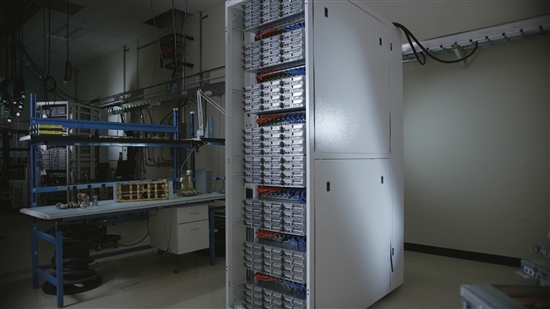Dell designed a unique approach to liquid cooling that’s built on Dell’s rack-scale infrastructure. Is is a completely new datacenter cooling solution from the ground up to improve performance during peak times while reducing their total cost of ownership (TCO). It was a proof of concept for EBay that is being made broadly available.
Because water can transport heat 25 times more efficiently than air, ‘Triton’ can run high performing components faster and more efficiently than traditional air-cooled systems. Its ability to sub-cool the processor and operate at higher frequencies means that ‘Triton’ can deliver up to 59% greater performance than the popular Intel Xeon processor E5-2680v4 for similar costs. The combination of ‘Triton’ and a customized 200W Intel Xeon processor E5 v4 can also provide double digit performance increases over the highest performing Intel Xeon processor on the market today
So how does ‘Triton’ do this? For starters, we’ve removed the need for more costly and less efficient liquid-to-liquid heat exchangers, cooling loops or pumping systems that most cooling solutions require. Dell is the first major vendor to safely bring facility water directly in each server sled to cool the CPU, which brings unparalleled cooling efficiencies along with the lowest water consumption of any liquid cooled solution on the market today. In fact, this approach uses 97% less datacenter cooling power than the average air-cooled datacenter, up to 62% less power consumption than HPE Apollo 8000, and has a power usage effectiveness (PUE) as low as 1.02 to 1.03(3). Such efficiencies translates into major operational cost savings while also increasing performance for demanding applications.
Here is a 14 page paper from Moor Insight Strategy on Dell’s Triton cooling
IBM first introduced water-cooled mainframes in 1964, but the transition to lower-power CMOS technology (that could be cooled with less expensive ambient air) and the availability of lower cost air conditioning drove datacenters to adopt air cooling as their primary cooling system model. However, vendors are again looking at liquid cooling as an approach that may be a good fit for very specific environments.
SOURCES – Dell, Moor Insight Strategy

Brian Wang is a Futurist Thought Leader and a popular Science blogger with 1 million readers per month. His blog Nextbigfuture.com is ranked #1 Science News Blog. It covers many disruptive technology and trends including Space, Robotics, Artificial Intelligence, Medicine, Anti-aging Biotechnology, and Nanotechnology.
Known for identifying cutting edge technologies, he is currently a Co-Founder of a startup and fundraiser for high potential early-stage companies. He is the Head of Research for Allocations for deep technology investments and an Angel Investor at Space Angels.
A frequent speaker at corporations, he has been a TEDx speaker, a Singularity University speaker and guest at numerous interviews for radio and podcasts. He is open to public speaking and advising engagements.



